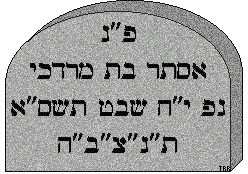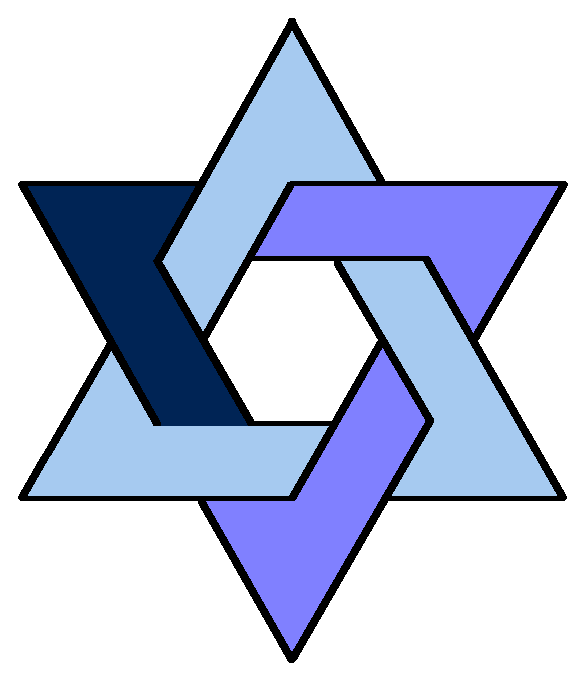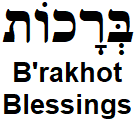Level: Basic
In Judaism, life is valued above almost all else. The Talmud notes that all people are descended from a single person, thus taking a single life is like destroying an entire world, and saving a single life is like saving an entire world.
Of the 613 commandments, only the prohibitions against murder, idolatry, incest and adultery are so important that they cannot be violated to save a life. Judaism not only permits, but often requires a person to violate the commandments if necessary to save a life. A person who is extremely ill, for example, or a woman in labor, is not permitted to fast on Yom Kippur, because fasting at such a time would endanger the person's life. When a man I knew suffered a stroke during Shabbat services at an Orthodox synagogue, the rabbi immediately paused the service to call an ambulance, even though using the phone is not normally permitted on Shabbat. Abortions where necessary to save the life of a mother are mandatory (the unborn are not considered human life in Jewish law, thus the mother's human life overrides).
Because life is so valuable, we are not permitted to do anything that may hasten death, not even to prevent suffering. Euthanasia, suicide and assisted suicide are strictly forbidden by Jewish law. The Talmud states that you may not even move a dying person's arms if that would shorten his life.
However, where death is imminent and certain, and the patient is suffering, Jewish law does permit one to cease artificially prolonging life. Thus, in certain circumstances, Jewish law permits "pulling the plug" or refusing extraordinary means of prolonging life.
In Judaism, death is not a tragedy, even when it occurs early in life or through unfortunate circumstances. Death is a natural process. Our deaths, like our lives, have meaning and are all part of G-d's plan. In addition, we have a firm belief in an afterlife, a world to come, where those who have lived a worthy life will be rewarded.
Mourning practices in Judaism are extensive, but they are not an expression of fear or distaste for death. Jewish practices relating to death and mourning have two purposes: to show respect for the dead (kavod ha-met), and to comfort the living (nihum avelim), who will miss the deceased.
After a person dies, the eyes are closed, the body is laid on the floor and covered, and candles are lit next to the body. The body is never left alone until after burial, as a sign of respect. The people who sit with the dead body are called shomerim, from the root Shin-Mem-Reish (שמר), meaning "guards" or "keepers".
Respect for the dead body is a matter of paramount importance. For example, the shomerim may not eat, drink, or perform a commandment in the presence of the dead. To do so would be considered mocking the dead, because the dead can no longer do these things.
Most communities have an organization to care for the dead, known as the chevra kaddisha (the holy society). These people are volunteers. Their work is considered extremely meritorious, because they are performing a service for someone who can never repay them.
Autopsies in general are discouraged as desecration of the body. They are permitted, however, where it may save a life or where local law requires it. When autopsies must be performed, they should be minimally intrusive.
The presence of a dead body is considered a source of ritual impurity. For this reason, a kohein may not be in the presence of a corpse. People who have been in the presence of a body wash their hands before entering a home. This is done to symbolically remove spiritual impurity, not physical uncleanness: it applies regardless of whether you have physically touched the body.
In preparation for the burial, the body is thoroughly cleaned and wrapped in a simple, plain linen shroud. The Sages decreed that both the dress of the body and the coffin should be simple, so that a poor person would not receive less honor in death than a rich person. The body is wrapped in a tallit with its tzitzit rendered invalid. The body is not embalmed, and no organs or fluids may be removed. It is generally accepted, though, that organ donation is permitted, because the subsequent burial of the donee will satisfy the requirement of burying the entire body.
The body must not be cremated. It must be buried in the earth. Coffins are not required, but if they are used, they must have holes drilled in them so the body comes in contact with the earth.
The body is never displayed at funerals; open casket ceremonies are forbidden by Jewish law. According to Jewish law, exposing a body is considered disrespectful, because it allows not only friends, but also enemies to view the dead, mocking their helpless state.
Jewish mourning practices can be broken into several periods of decreasing intensity. These mourning periods allow the full expression of grief, while discouraging excesses of grief and allowing the mourner to gradually return to a normal life.
When a close relative (parent, sibling, spouse or child) first hears of the death of a relative, it is traditional to express the initial grief by tearing one's clothing. The tear is made over the heart if the deceased is a parent, or over the right side of the chest for other relatives. This tearing of the clothing is referred to as keriyah (lit. "tearing"). The mourner recites the blessing describing G-d as "the true Judge," an acceptance of G-d's taking of the life of a relative.
From the time of death to the burial, the mourner's sole responsibility is caring for the deceased and preparing for the burial. This period is known as aninut (אֲנִינוּת). During this time, the mourners are exempt from all positive commandments ("thou shalts"), because the preparations take first priority. This period usually lasts a day or two; Judaism requires prompt burial.
During this aninut period, the family should be left alone and allowed the full expression of grief. Condolence calls or visits should not be made during this time.
After the burial, a close relative, near neighbor or friend prepares the first meal for the mourners, the se'udat havra'ah (סְעוּדָת הַבְרָאָה, meal of condolence). This meal traditionally consists of eggs (a symbol of life) and bread. The meal is for the family only, not for visitors. After this time, condolence calls are permitted.
The next period of mourning is known as shiva (שִׁבְעָה, seven, because it lasts seven days). Shiva is observed by parents, children, spouses and siblings of the deceased, preferably all together in the deceased's home. Shiva begins on the day of burial and continues until the morning of the seventh day after burial. Mourners sit on low stools or the floor instead of chairs, do not wear leather shoes, do not shave or cut their hair, do not wear cosmetics, do not work, and do not do things for comfort or pleasure, such as bathe, have sex, put on fresh clothing, or study Torah (except Torah related to mourning and grief). Mourners wear the clothes that they tore at the time of learning of the death or at the funeral. Mirrors in the house are covered. Prayer services are held where the shiva is held, with friends, neighbors and relatives making up the minyan (10 people required for certain prayers). If you are visiting a shiva household and you see a lot of food, please do not ask for or take "leftovers." This food is intended to relieve the burden of the mourners, and while you are welcome to eat as much as you want while you are visiting, or take home food if the host offers it, you shouldn't seek more than your share. I point this out because I know people who have experienced this during shiva.
If a festival occurs during the mourning period, the mourning is terminated, but if the burial occurs during a festival, the mourning is delayed until after the festival. The Shabbat that occurs during the shiva period counts toward the seven days of shiva, and does not end the mourning period. Public mourning practices (such as wearing the torn clothes, not wearing shoes) are suspended during this period, but private mourning continues.
The next period of mourning is known as shloshim (שְׁלֹשִׁים, thirty, because it lasts until the 30th day after burial). During that period, the mourners do not attend parties or celebrations, do not shave or cut their hair, and do not listen to music.
The final period of formal mourning is avelut (אֲבֵילוּת, mourning), which is observed only for a parent. This period lasts for twelve months after the burial. During that time, mourners avoid parties, celebrations, theater and concerts. For eleven months of that period, starting at the time of burial, the son of the deceased recites the mourner's Kaddish every day.
After the avelut period is complete, the family of the deceased is not permitted to continue formal mourning; however, there are a few continuing acknowledgments of the decedent. Every year, on the anniversary of the death, family members observe the deceased's Yahrzeit (יאָרצײַט, Yiddish for "anniversary"). On the Yahrzeit, sons recite Kaddish and take an aliyah (bless the Torah reading) in synagogue if possible, and all mourners light a candle in honor of the decedent that burns for 24 hours. In addition, during services on Yom Kippur, Shemini Atzeret, the last day of Passover, and Shavu'ot, after the haftarah reading in synagogue, close relatives recite the mourner's prayer, Yizkor (יִזְכּוֹר, "May He remember...") in synagogue. Yahrzeit candles are also lit on those days.
When visiting a mourner, a guest should not try to express grief with standard, shallow platitudes. The guest should allow the mourner to initiate conversations. One should not divert the conversation from talking about the deceased; to do so would limit the mourner's ability to fully express grief, which is the purpose of the mourning period. On the contrary, the caller should encourage the mourner's conversation about the deceased.
When leaving a house of mourning, it is traditional for the guest to say, "May the Lord comfort you with all the mourners of Zion and Jerusalem."
Kaddish is commonly known as a mourner's prayer, but in fact, variations on the Kaddish prayer are routinely recited at many other times, and the prayer itself has nothing to do with death or mourning. The prayer begins "May His great Name grow exalted and sanctified in the world that He created as He willed. May He give reign to His kingship in your lifetimes and in your days ..." and continues in much that vein. The real mourner's prayer is Eil Malei Rachamim (G-d, Full of Mercy), which is recited at grave sites and during funerals. That prayer specifically requests that the Divine provide rest to the soul of the deceased, much more the sort of thing you would expect mourners to recite.
Why, then, is Kaddish recited by mourners?
After a great loss like the death of a parent, you might expect a person to lose faith in G-d, or to cry out against G-d's injustice. Instead, Judaism requires a mourner to stand up every day, publicly (i.e., in front of a minyan, a quorum of 10 adult men), and reaffirm faith in G-d despite this loss. To do so shows the merit of the deceased in the eyes of G-d, because the deceased must have been a very good parent to raise a child who could express such faith in the face of personal loss.
Then why is Kaddish recited for only 11 months, when the mourning period is 12 months? According to Jewish tradition, the soul must spend some time purifying itself before it can enter the World to Come. The maximum time required for purification is 12 months, for the most evil person. To recite Kaddish for 12 months would imply that the parent was the type who needed 12 months of purification! To avoid this implication, the Sages decreed that a son should recite Kaddish for only eleven months.
A person is permitted to recite Kaddish for other close relatives as well as parents, but only if his parents are dead.
See Mourners' Kaddish for the full text of the Mourners' Kaddish.
 Jewish
law requires that a tombstone be prepared, so that the deceased will not be forgotten and the grave will not
be desecrated. It is customary in some communities to keep the tombstone veiled, or to delay in putting it up
or engraving it, until the end of the 12-month mourning period. The idea underlying this custom is that the
dead will not be forgotten when he is being mourned every day. In communities where this custom is observed,
there is generally a formal unveiling ceremony when the tombstone is revealed.
Jewish
law requires that a tombstone be prepared, so that the deceased will not be forgotten and the grave will not
be desecrated. It is customary in some communities to keep the tombstone veiled, or to delay in putting it up
or engraving it, until the end of the 12-month mourning period. The idea underlying this custom is that the
dead will not be forgotten when he is being mourned every day. In communities where this custom is observed,
there is generally a formal unveiling ceremony when the tombstone is revealed.
It is also customary in some communities to place small stones on a gravesite when visiting it. This custom has become well-known from the movie Schindler's List, in which the children of Survivors place stones on the grave of Oscar Schindler. The custom is not universal, even among traditional Jews, and there seems to be some doubt as to how it originated. It seems to have superstitious origins. It's a little like leaving a calling card for the dead person, to let them know you were there. Stones, unlike flowers, are permanent and do not get blown away in the wind. Some other sources suggest that it was originally done because we are required to erect a tombstone, and tombstones that actually looked like tombstones tended to get desecrated.
What is written on a tombstone? In most cases, it is very straightforward Hebrew text, similar to what you might see on a tombstone in English. An illustration of a typical Jewish tombstone is shown above.
At the top is the abbreviation Pei-Nun, which stands for either "poh nitman" or "poh nikbar", which means "here lies..." The marks that look like quotation marks are commonly used to indicate an abbreviation or a number written in letters.
The next line is the name of the decedent, in the form (decedent's name), son of or daughter of [father's name]. "Son of" is either ben (בן) or bar (בר). "Daughter of" is bat (בת). The tombstone above says "Esther bat Mordecai" (Elsie, daughter of Maurice). Sometimes, one or both of the names is preceded by the letter Reish (ר), which simply stands for "Reb" and means "Mr." The names may also be followed by the title ha-Kohein (הכהן), ha-Levi (הלבי) or ha-Rav (הרב), indicating that the person was a kohein, a Levite or a rabbi. See the Hebrew Alphabet page if you need help in identifying specific letters on a tombstone.
The third line indicates the date of death. This line begins with the abbreviation Nun-Pei (נפ) followed by the date, the month, and the year. The date and year are written in Hebrew numerals, which are letters. The month name is sometimes preceded by a Beit (meaning "of"). The tombstone above indicates that the date of death was 18 Shevat 5761. יח is 10+8 = 18. שבת is the month name Shevat. תשסא is 400+300+60+1 = 761 (the 5000 is assumed). See Hebrew Alphabet - Numerical Values if you need help decoding a number. See Jewish Calendar - Links to Jewish Calendars if you need help converting a Hebrew date to a secular date.
The last line is an abbreviation that stands for "tehe nishmatah tzerurah bitzror hachayim," which means "may her soul be bound in the bond of eternal life."
 You
may also find Jewish symbols on a tombstone, such as a menorah, a
magen David, a torah scroll, a lion, or the two
tablets of the ten commandments. Most of these symbols don't tell you
anything about the decedent (other than the fact that he or she was Jewish). However, if you see a picture of
hands in a position like the one in the picture, similar to Mr. Spock's Vulcan salute from Star Trek, this
normally indicates that the decedent was a kohein, because this hand position
is used when the kohanim bless the congregation at certain times of the year. (Leonard Nimoy was Jewish and
borrowed the gesture from his childhood memories)
You
may also find Jewish symbols on a tombstone, such as a menorah, a
magen David, a torah scroll, a lion, or the two
tablets of the ten commandments. Most of these symbols don't tell you
anything about the decedent (other than the fact that he or she was Jewish). However, if you see a picture of
hands in a position like the one in the picture, similar to Mr. Spock's Vulcan salute from Star Trek, this
normally indicates that the decedent was a kohein, because this hand position
is used when the kohanim bless the congregation at certain times of the year. (Leonard Nimoy was Jewish and
borrowed the gesture from his childhood memories)
The definitive book on Jewish mourning practices is Maurice Lamm's The Jewish Way in Death and Mourning. This book is available through most commercial bookstores, or click the link above to buy it online from amazon.com.
 Olam Ha-Ba: The Afterlife
Olam Ha-Ba: The Afterlife Mourner's Kaddish
Mourner's Kaddish